New Features
1. Compare Table Version 2.0
2. Key Pattern Capability
1. Compare Table Version 2.0
In this Release, our Users will get an enhanced version of the Compare Table. Many new options were added that Chemists will appreciate.
Making a Compare Table
To make a Compare Table, click on the NEW button next to the stage name, select Compare and then the list of records that can be compared will be available. Please contact your CS Manager if you would like to compare certain records. Please refer to the figure 1a) and 1b) below for more details.
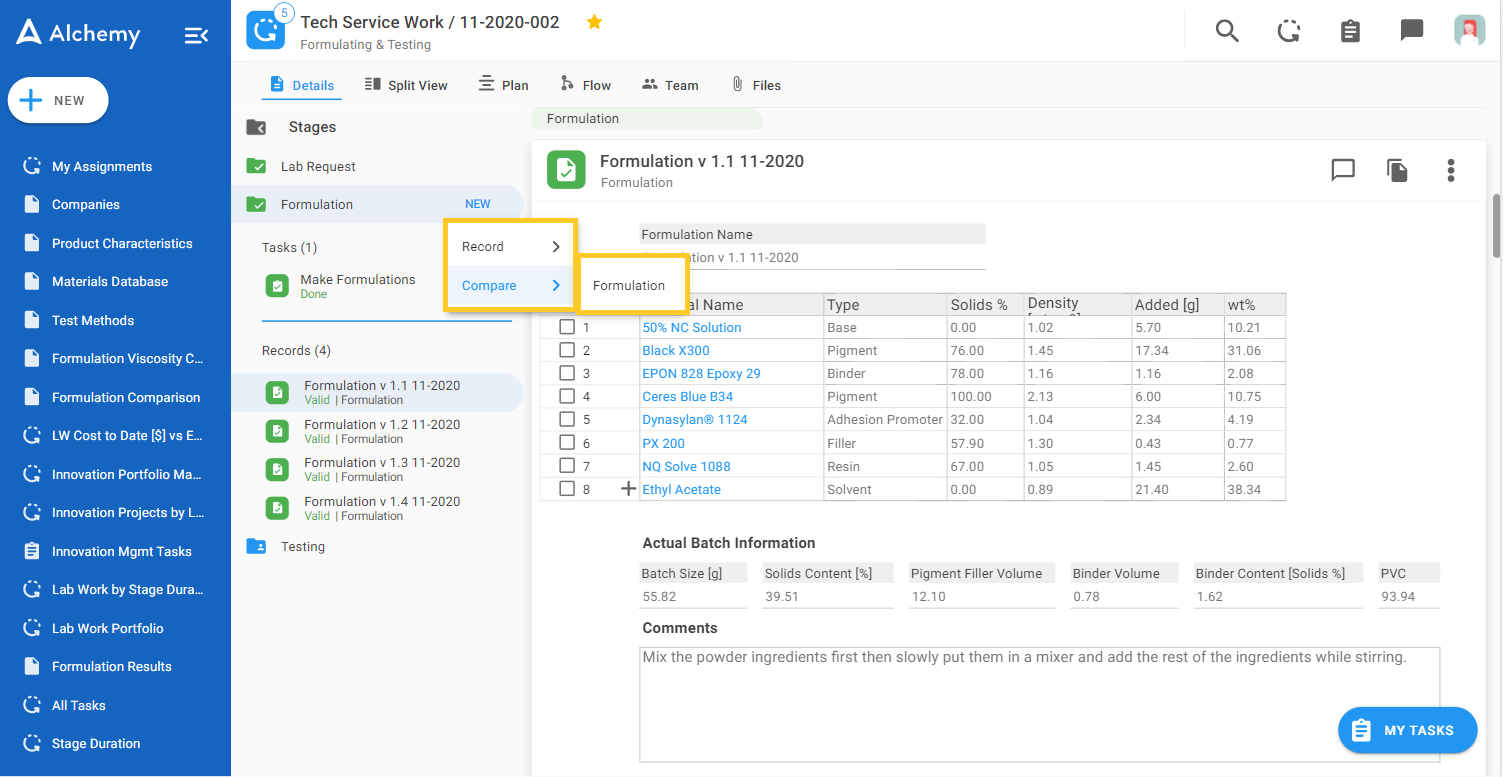
The new start screen for Compare Tables is shown below. There are visual cues and helper text for getting started.

You can select the records you would like to compare by clicking on the Manage Records icon.
Besides the previously available options of adding an Existing Record and Cloning an Existing Record (Figure 2a), now you can also add a completely blank record as a starting point too. When you click on the 'Add Blank Record' a new record will appear in the navigation bar on the left side.It will be empty and ready for inputting data. When you add records to the Compare Table, the option 'Remove All Records' will also be available so you can remove all records at once if you select that option.
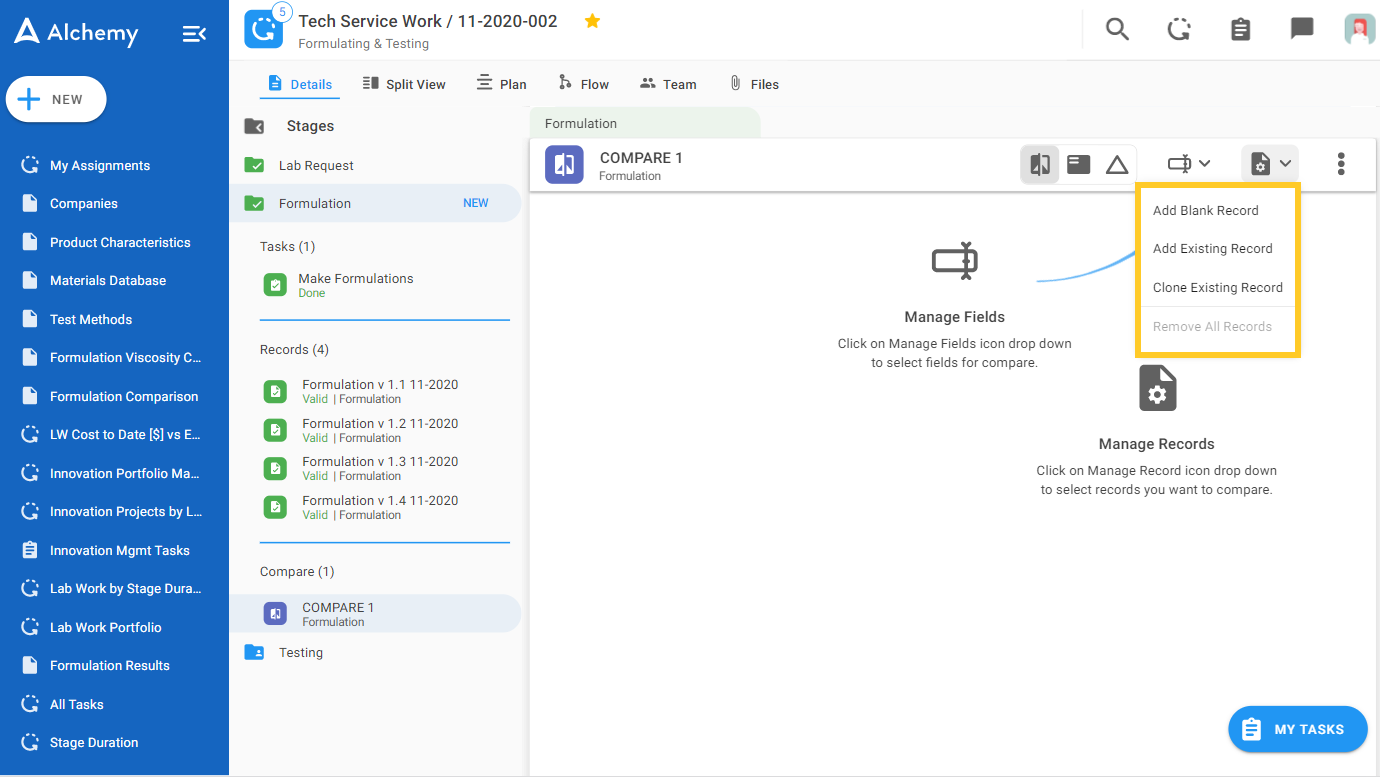
You can input data directly in a Compare Table or go to that exact underlying record by clicking on it in the navigation bar and start entering data there (Figure 2b). You may notice that the record status is designated as red and invalid in both the record list and the Compare Table itself. That is because the record is not yet completely filled out.

In this Compare we will pull existing Formulations from this process (in one of the previous release notes, pulling existing records and cloning them was explained: https://alchemy.cloud/release-notes/release-48). In Figure 3 below you can see the selected Formulation records for comparison.
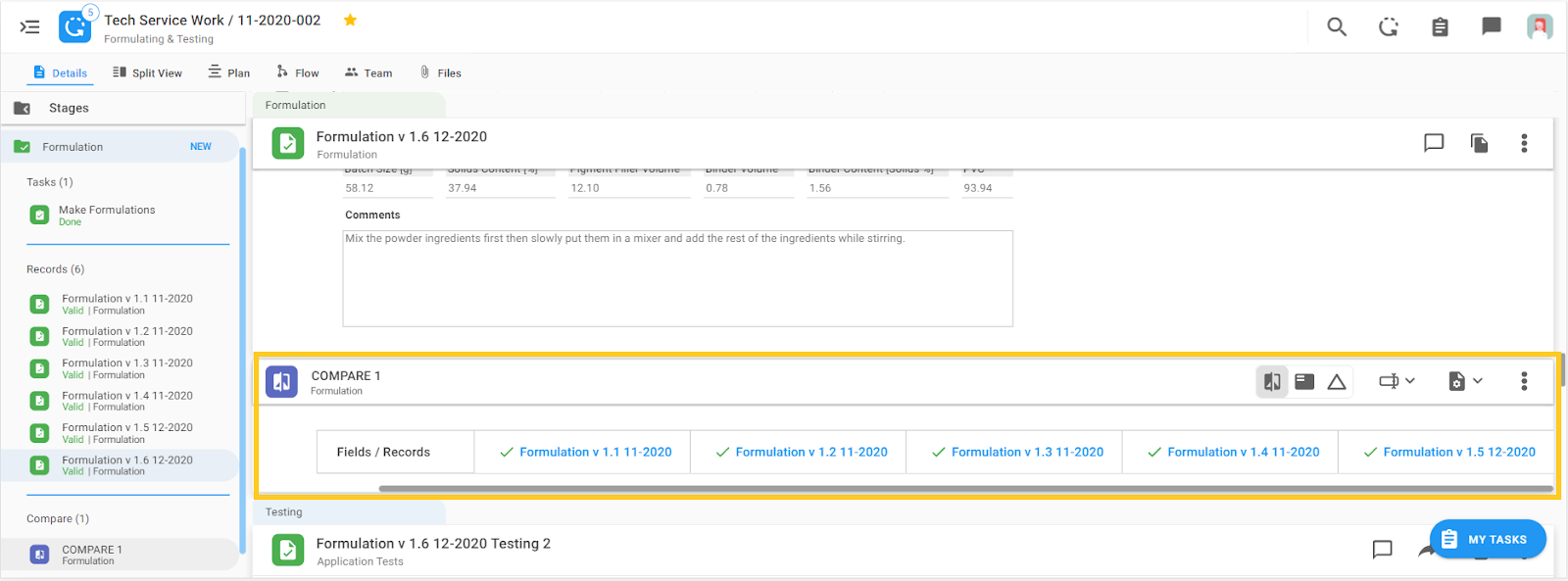
Now, you can also select the fields that you would like to compare. Click on the Manage Fields Icon:
A drop down with all fields from that record will be available. Click on the fields you would like to have in the table (Figure 4a).

In this example, we will select the following fields: Material, Added Material [g] (Figure 4b).
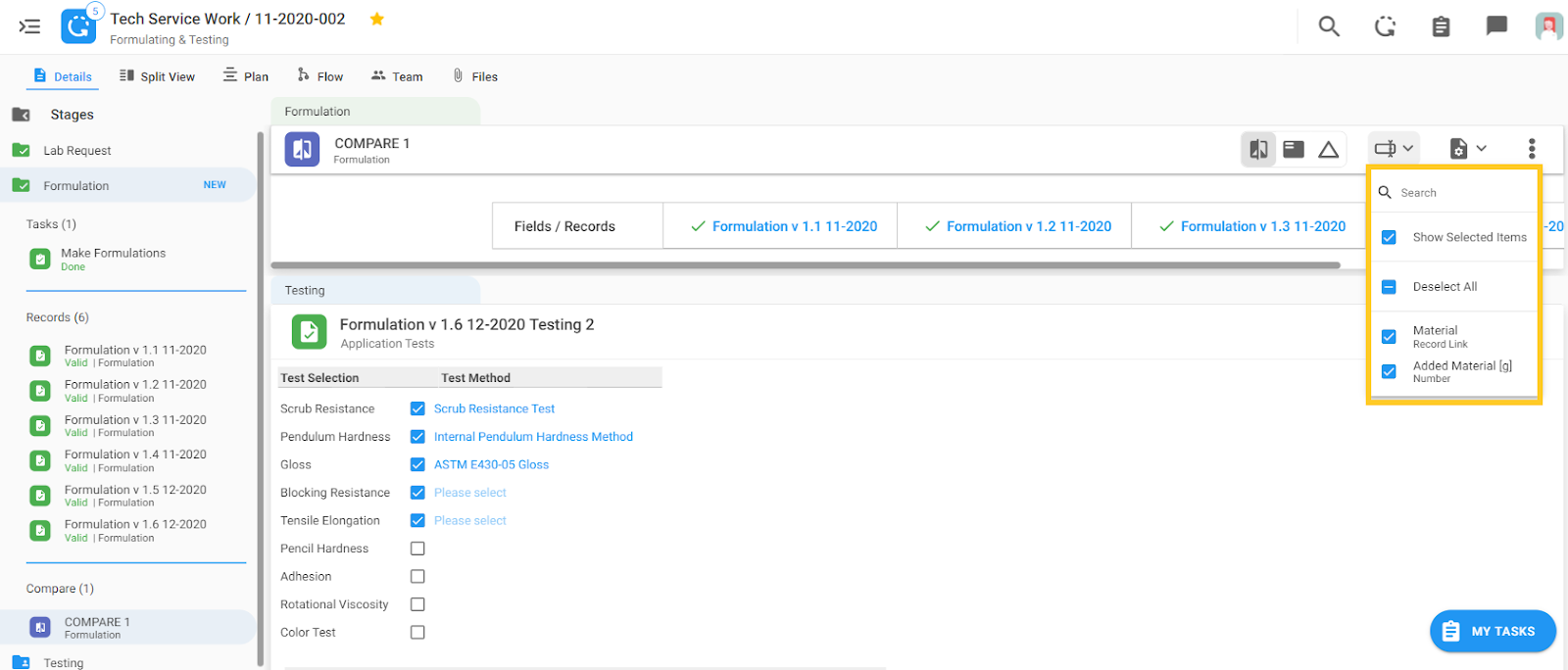
With the field selection, all necessary information is pulled into the Compare Table as represented in Figure 4c). The formatting options will be explained in further detail below.
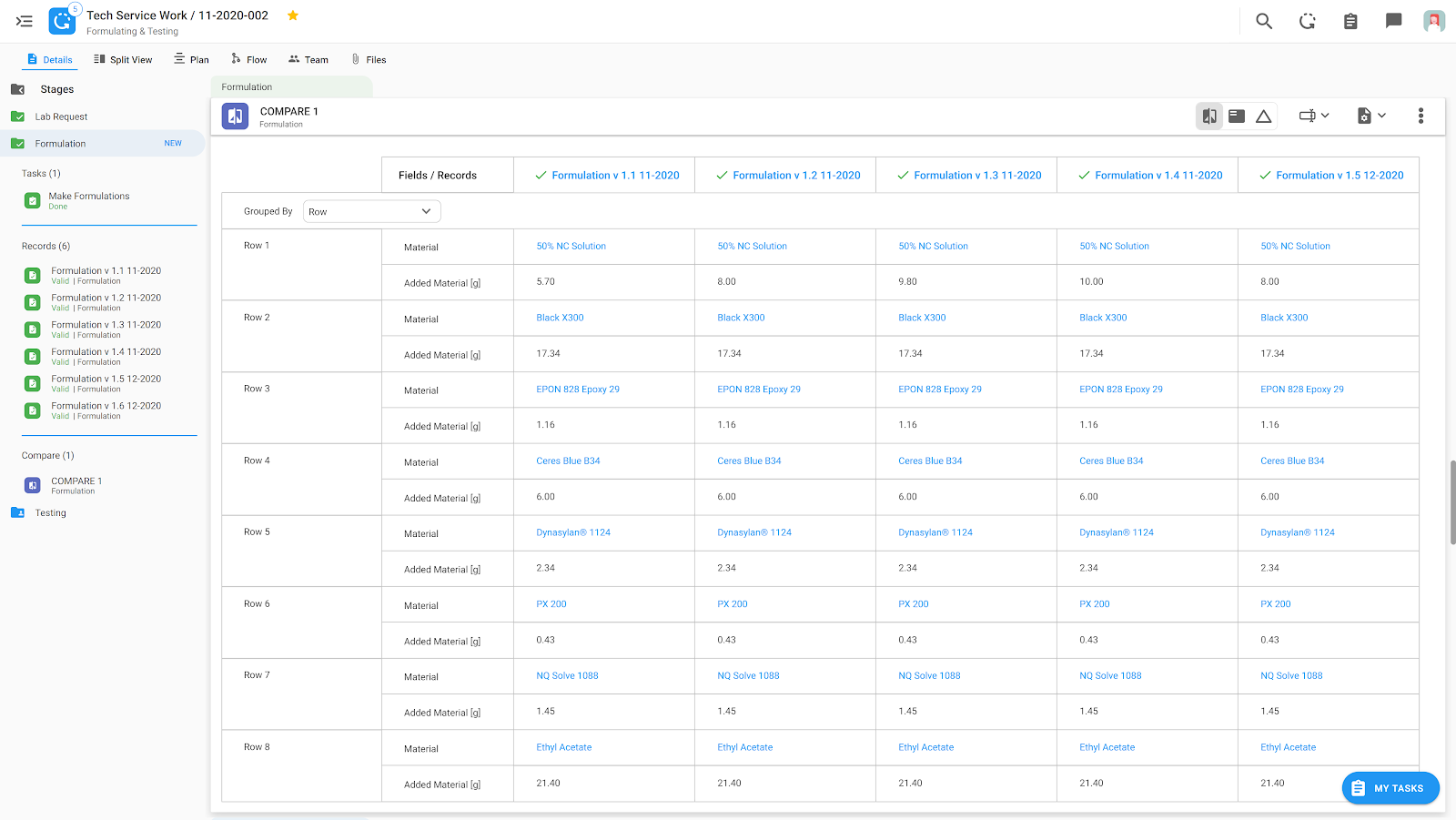
Column Resize
A lot of different formatting options have been introduced in Compare Version 2.0. First, columns can now be resized. Go to the edge of a column and adjust its width by moving the cursor left or right. Another option, if you want to resize all columns at once is to hold the Shift key and move the cursor left and right to reach the width you like. All columns will resize accordingly (Figure 5a).


Additionally columns can be reordered by dragging and dropping too (Figure 5c).
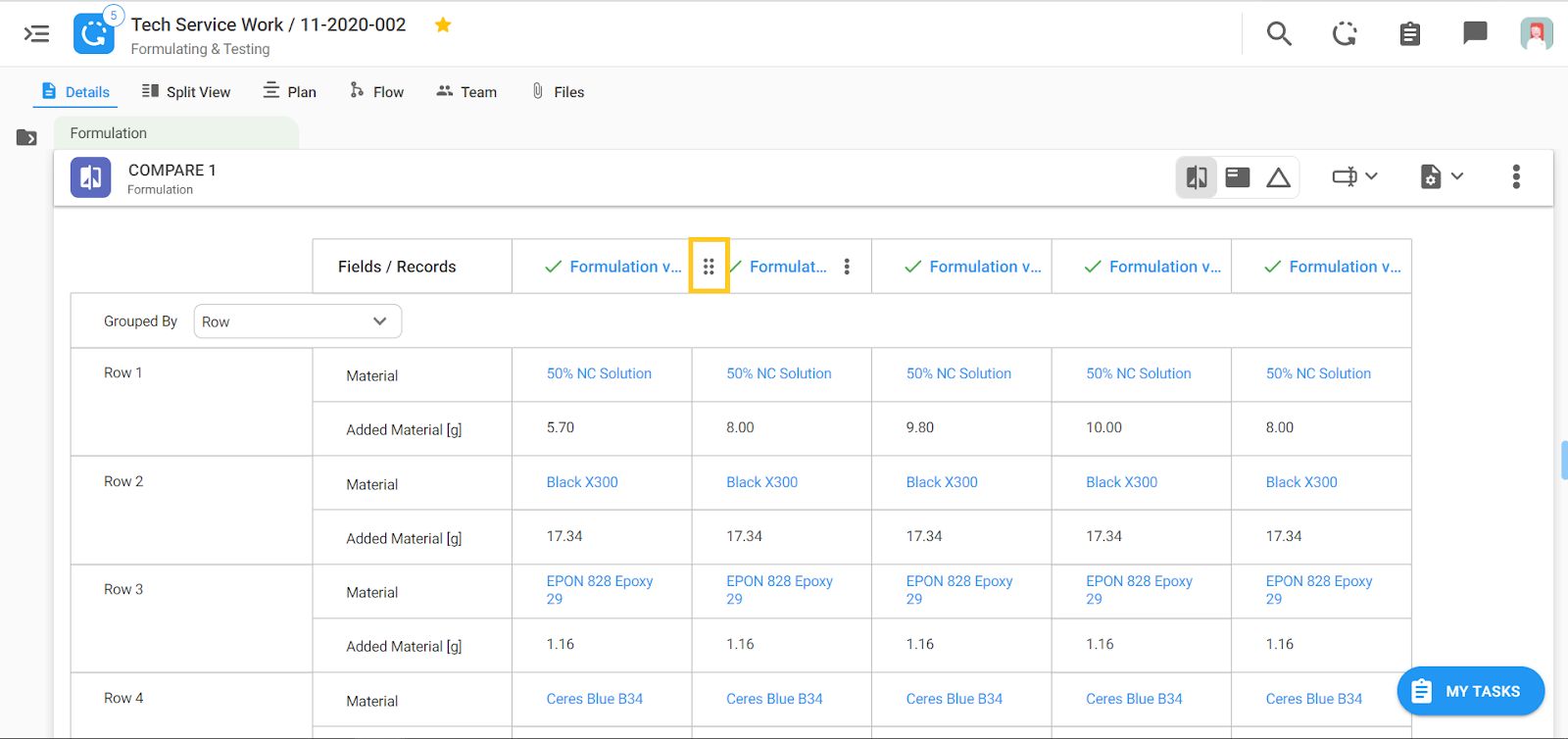
Group By Options
The Group By option has become more fully featured. You can group by rows and selected fields. In this example, we will group rows by Material (Figure 6a).

When the rows are grouped by material, the table looks as shown in Figure 6b).
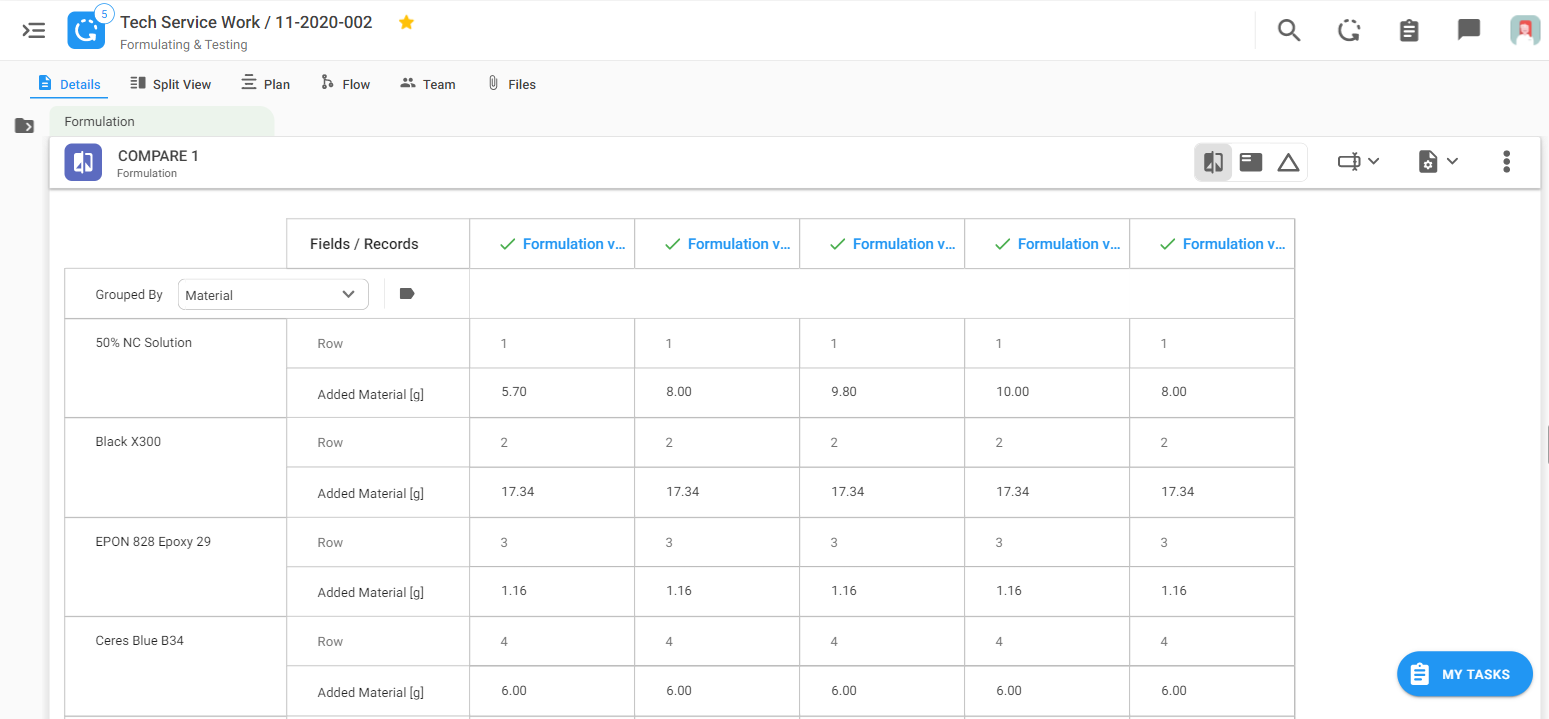
If you want to hide certain Row information in the table, you can click on the small ribbon icon next to the Grouped By drop down box highlighted with yellow below:

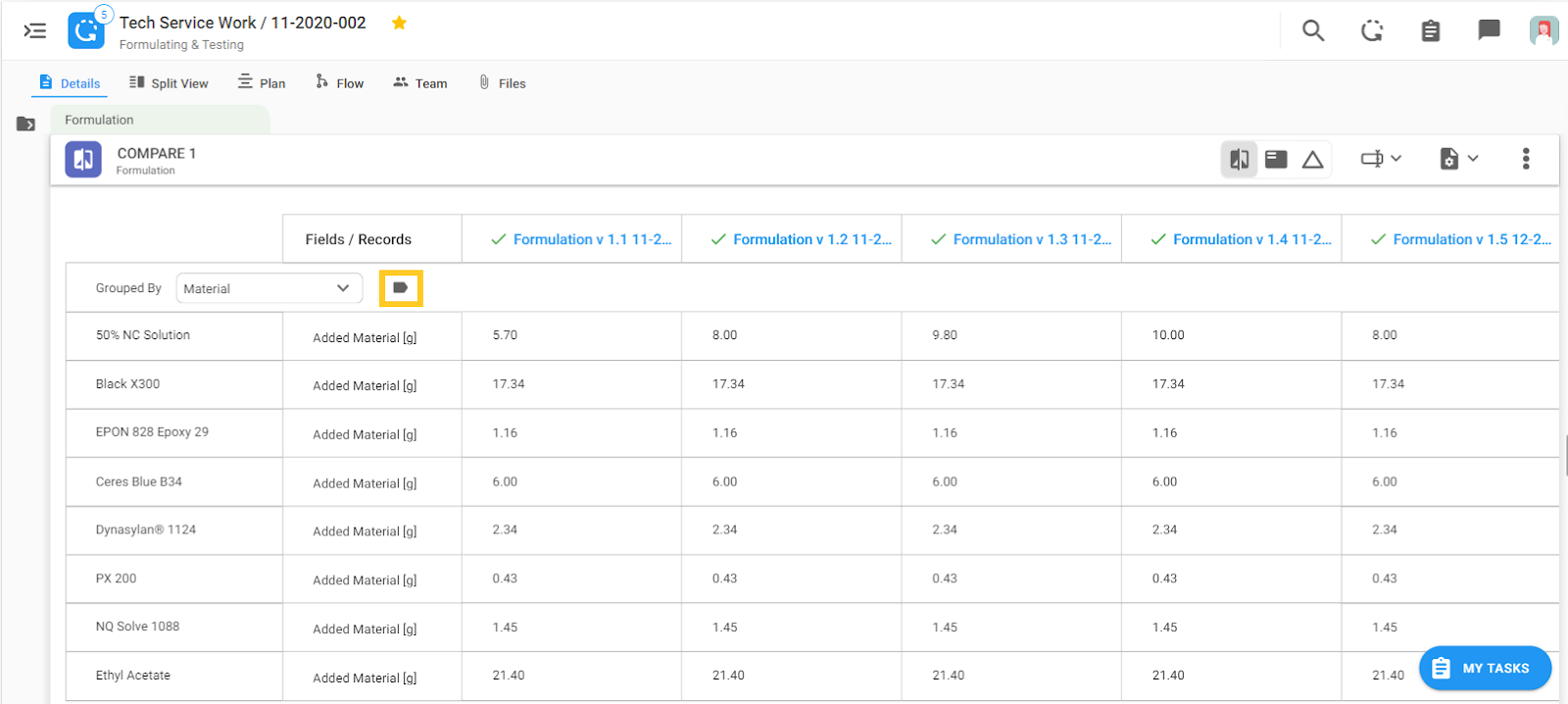
Column Options
When you hover over the right part of a column header you will see 3 dots. Behind the 3 dots there are 3 options: Clone the record represented in that column, Highlight the column, and Remove the record from the Compare Table.
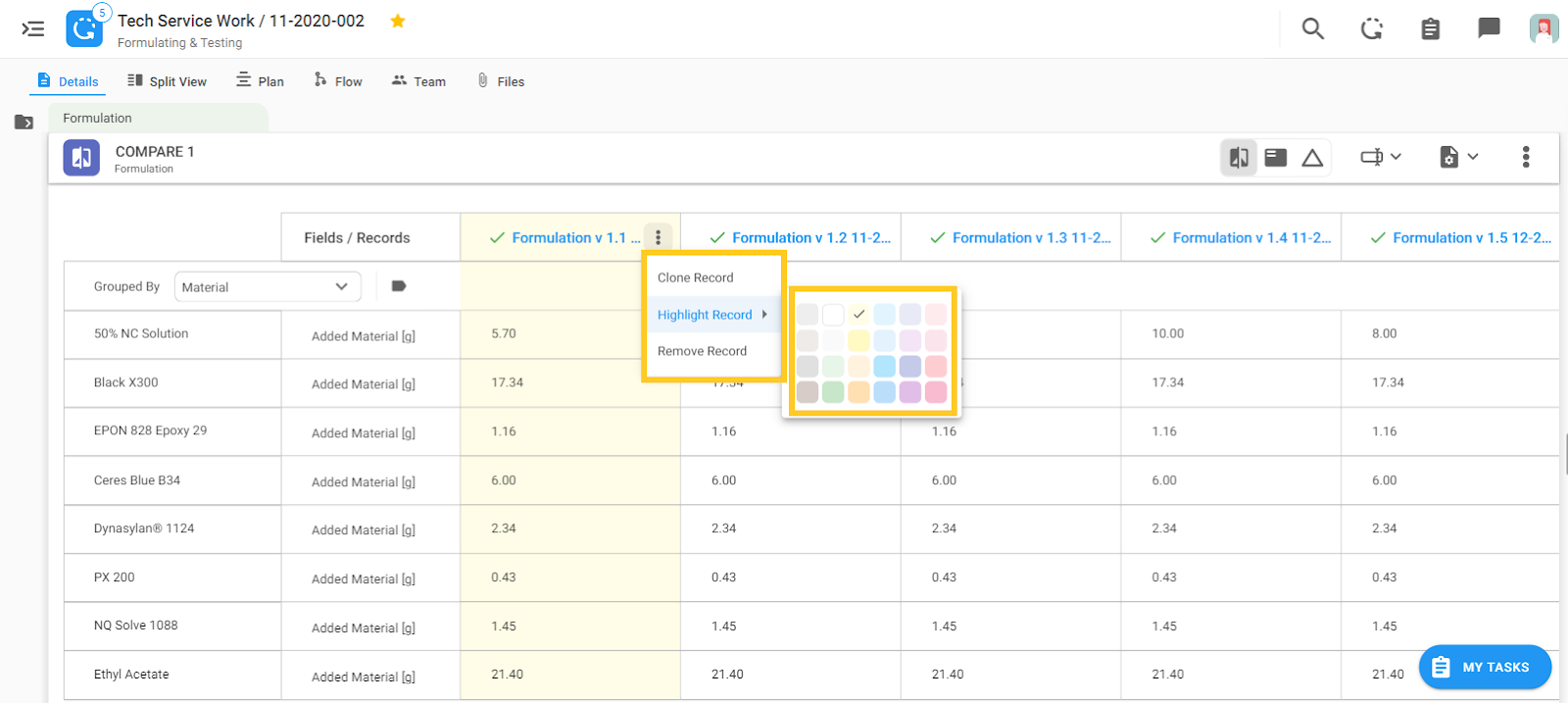
Row Options
Similarly, when you hover over the right part of the row header you will see 3 dots. In order to use these features, Group By needs to be set to Rows. There are again 3 options: Insert a row that will be applicable in all records, Clone the selected row and Delete the selected row (Figure 8). Remember that when you manipulate rows, your selections will be applied in bulk to all records in the Compare Table.
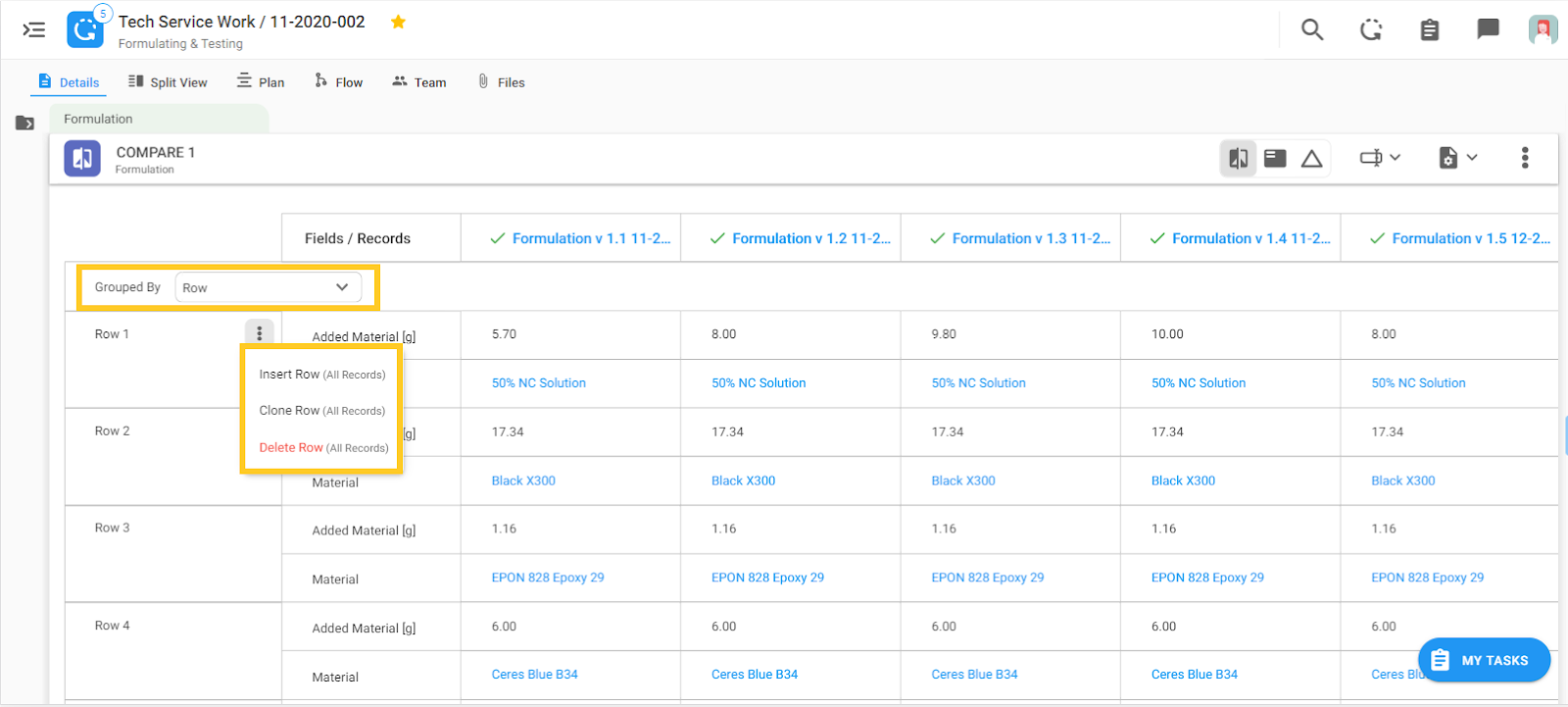
Cell Options
Each cell also has new available actions. Again, Group By needs to be set to Rows to utilize these features. There are again 3 options: Insert a row, Clone a row and Delete a row. When you manipulate actions at the cell level, only the record (column) in which you are selecting changes will be implemented. All the other records will stay the same. For further clarification, these are record-by-record changes as opposed to the row manipulation mentioned in the previous chapter which is a bulk update that can be used to adjust all records in the Compare Table at once.
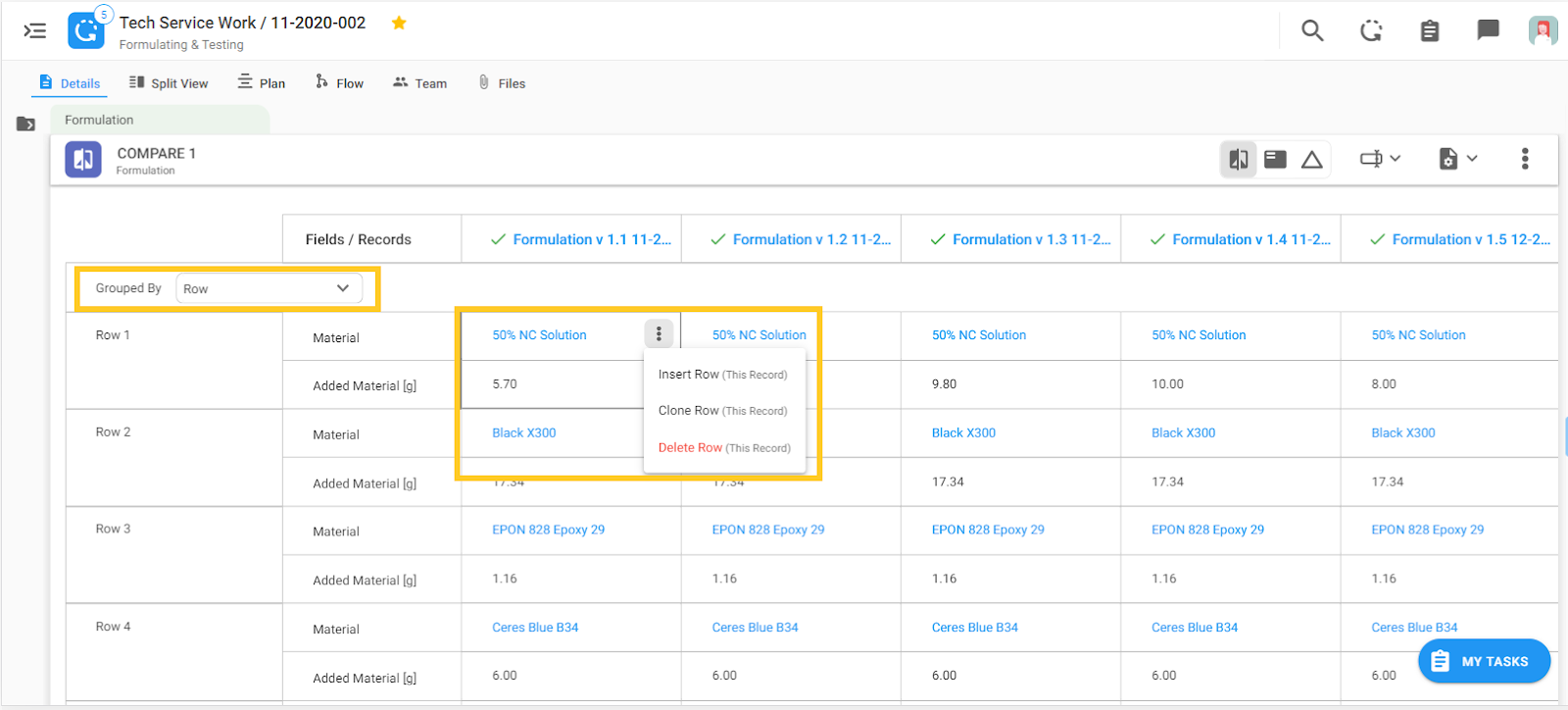
Highlight Mode
Highlight mode allows Chemists to more easily see which ingredient amounts and/or test results are different relative to their reference or control which will be the first record (column) in the Compare Table.
You can access this feature from the Compare toolbar which is at the top of the Compare Table on the right before the Manage Records and Manage Fields icons. There are now 3 additional icons there. If you want to use Highlight Mode, click on this icon:
The Compare table will highlight in bold which values are different from the control in subsequent columns. This means that everything that is bold is different in value from values in the first column (Figure 10).
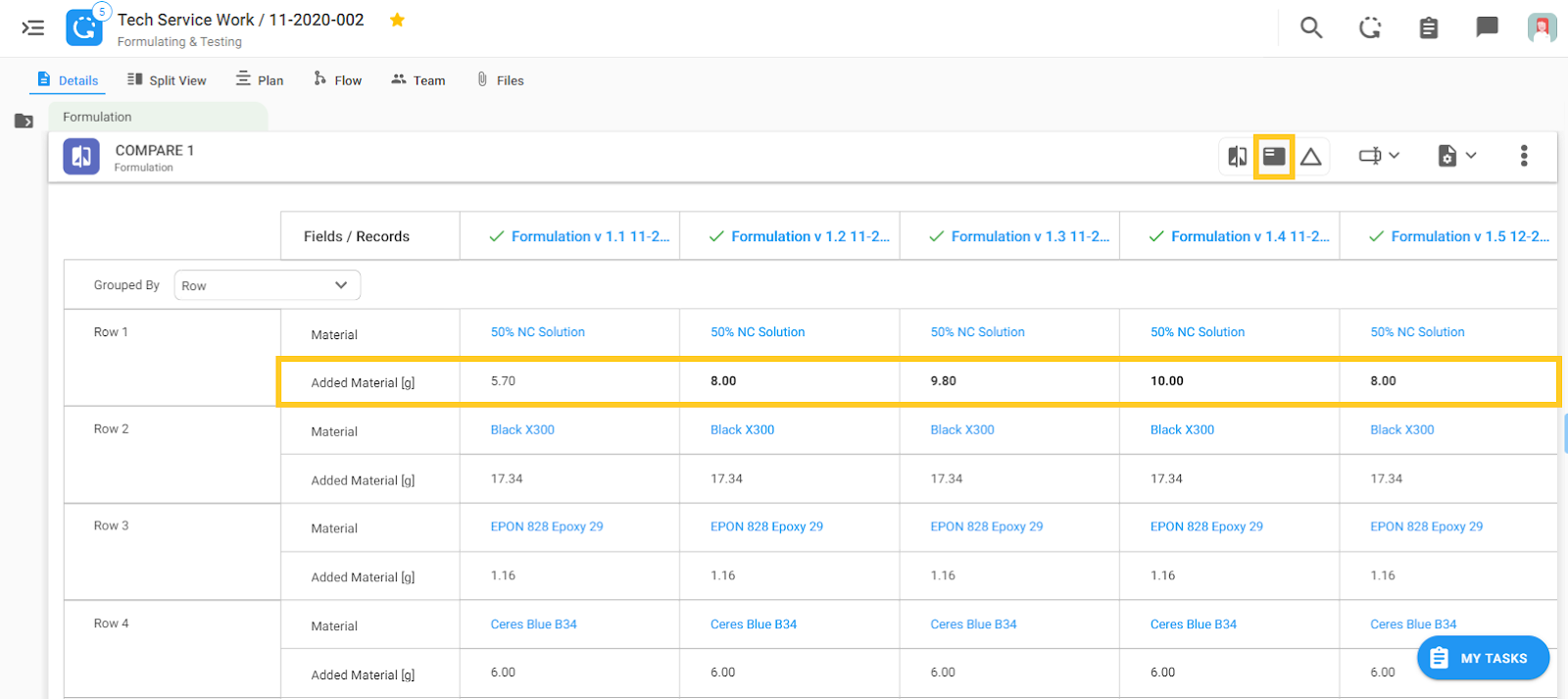
Delta Mode
Delta mode allows Chemists to more easily see how much ingredient amounts and/or test results have changed relative to their reference or control which will be the first record (column) in the Compare Table. Delta mode calculates the exact difference numerically. If you want to use Delta Mode, click on this icon:
You can see that the amount of change is highlighted in bold text in Figure 11.
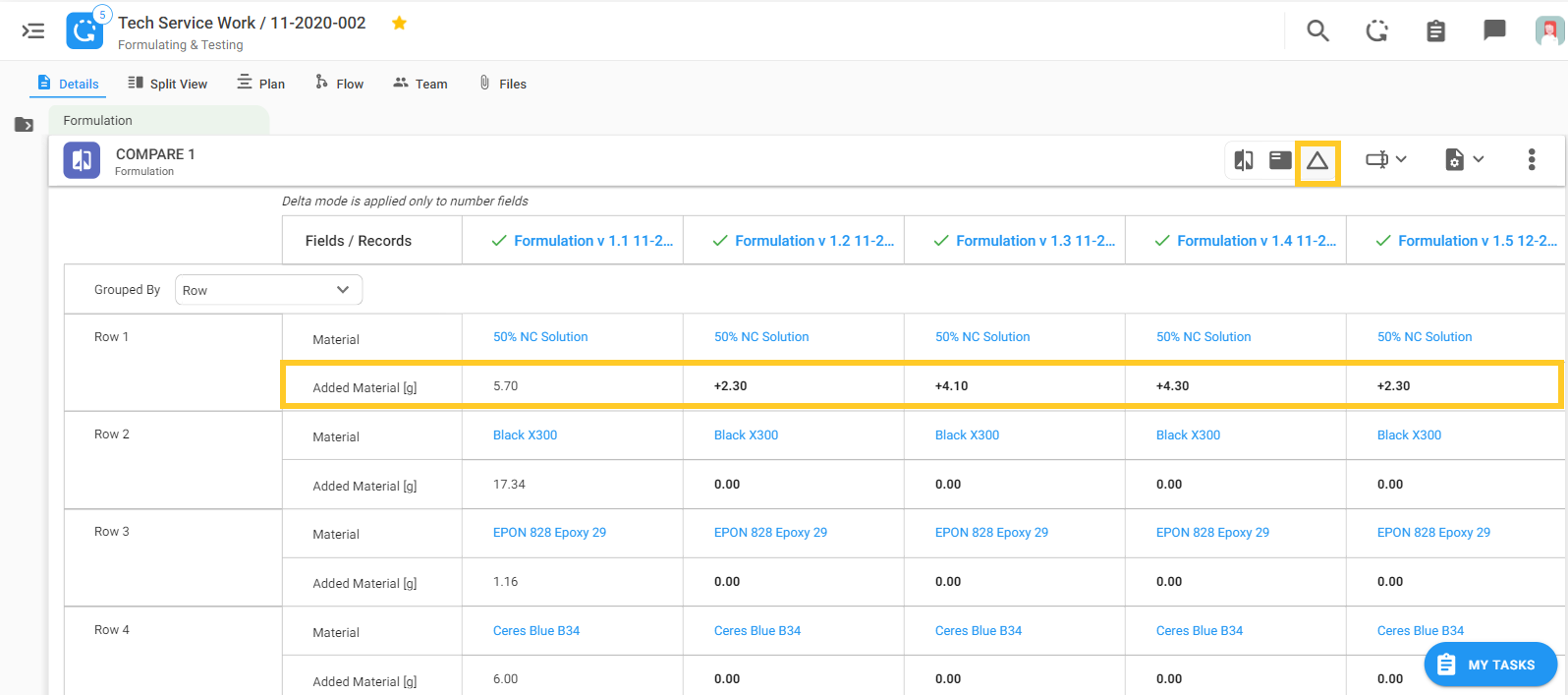
To return to the regular view just click on this icon:
Additional Options
In the Compare toolbar on the far right side behind the 3 dots, some additional options are now available for the whole Compare Table:
- Clone the table
- Hide table labels to condense the table
- Adjust table row height
- Print the table
- Delete the table
The table options are shown in Figure 12a.

Clone Table
The first table option is to Clone the whole Compare Table. When you clone the table you will see another Compare in the left navigation and below the existing table a new, identical one will appear (Figure 12b).
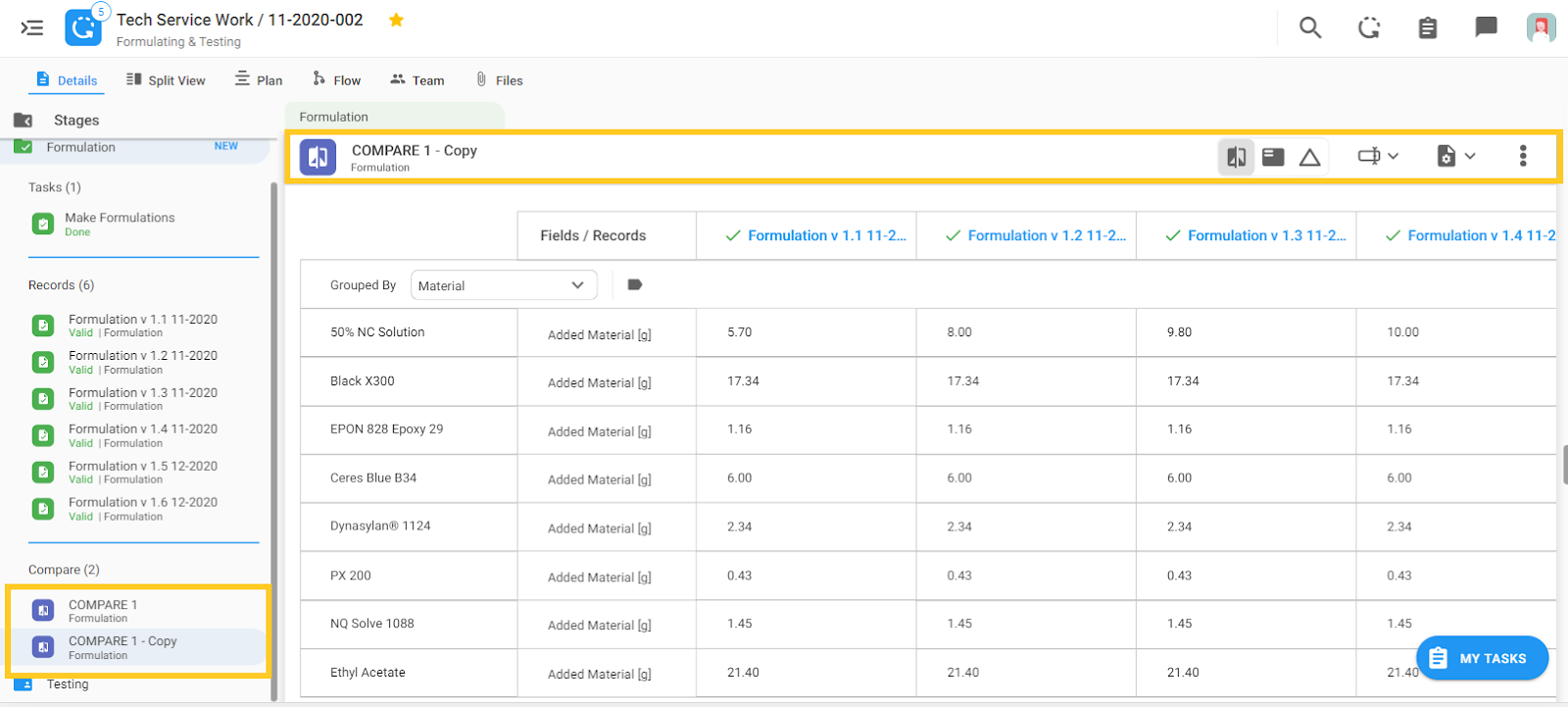
Hide Labels
The second table option is to hide labels. When you click on the Hide Labels option, the labels that you see next to the Material name will disappear (Figure 12c). You can return the labels by clicking on the 3 dots and selecting Show Labels. For clarity, the option available to you behind the 3 dots will always be the alternative to what you have displayed - Hide Labels if labels are being displayed or Show Labels if labels are hidden.
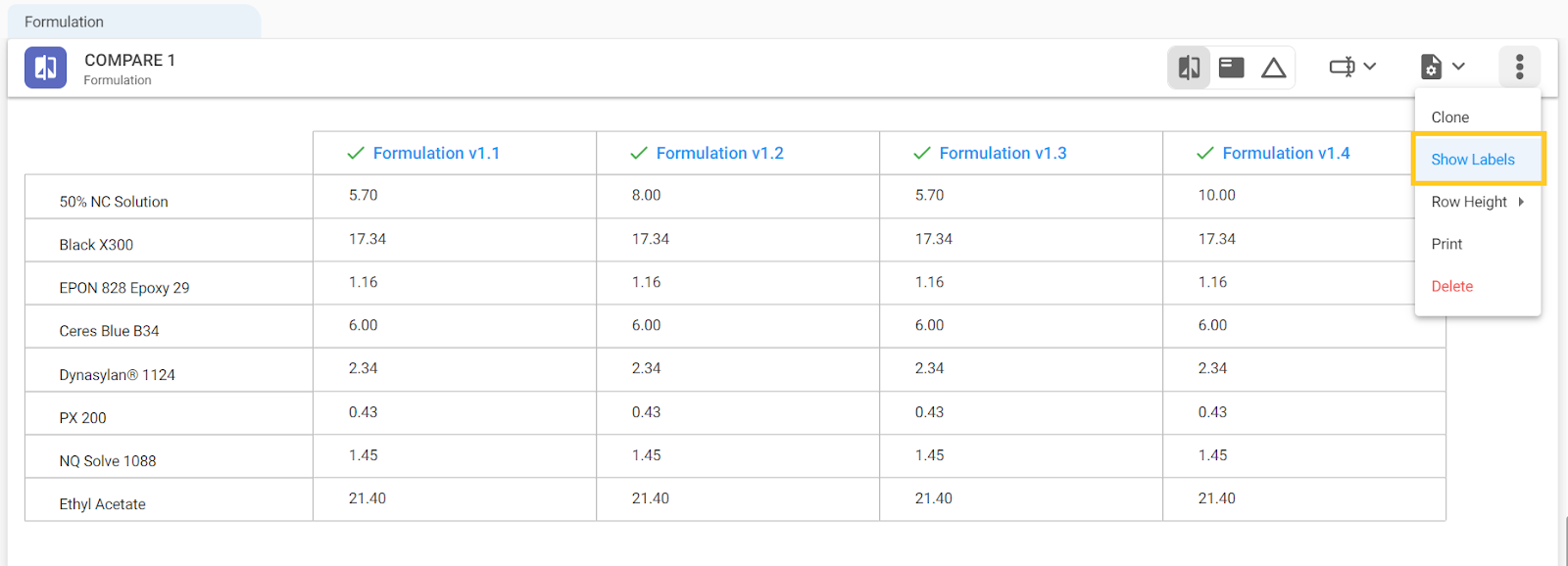
Adjust Table Row Height
The next table option is to change row height. Click on the Row Height and you can see that there are 2 options: Default and Comfortable.
Default looks like this (Figure 12d):
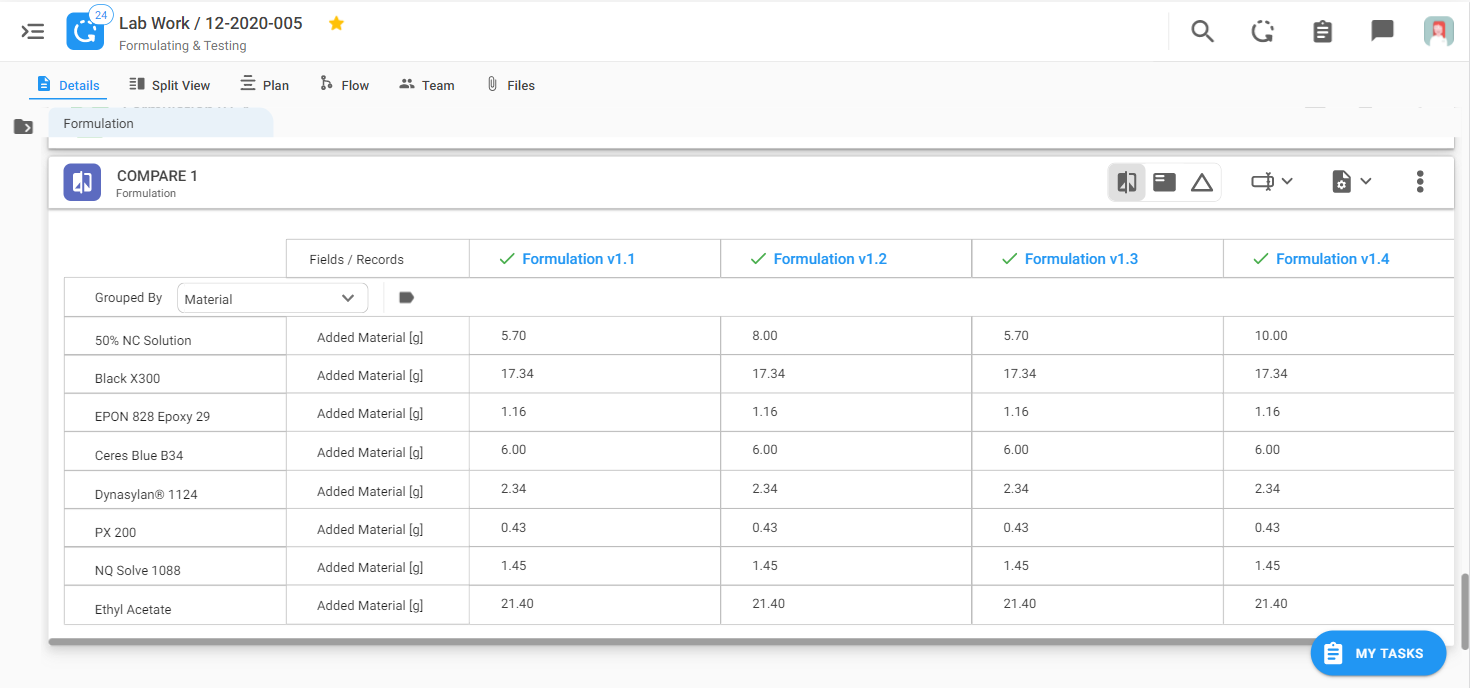
If you click on Row Height and select Comfortable as we did in the example below (Figure 12e), the row height will be bigger.

Print Table
When you select Print, you will get a pop-up dialogue for printing (depending on your device settings). From this pop up you can set up parameters for printing the page. In the example below (Figure 12f) in More Settings the scale was set to 58% so the whole table could fit the page. From here you can also save the Compare Table as a PDF.

Delete Table
If you select Delete from the Table toolbar, the whole Compare Table will be deleted, so be careful with that one!
2. Key Pattern Option
Key Pattern is a new capability that allows subcategories in our automated sequential naming patterns.
A simple example of a key pattern implementation is when you have Formulations of different categories or types and you want to include the category information in the formulation names. In this example, there are 3 different categories of Formulations (Figure 13a):
- R&D - formulas developed in the R&D department
- TS - formulas developed in the Tech Service department
- I - formulas developed for internal purposes
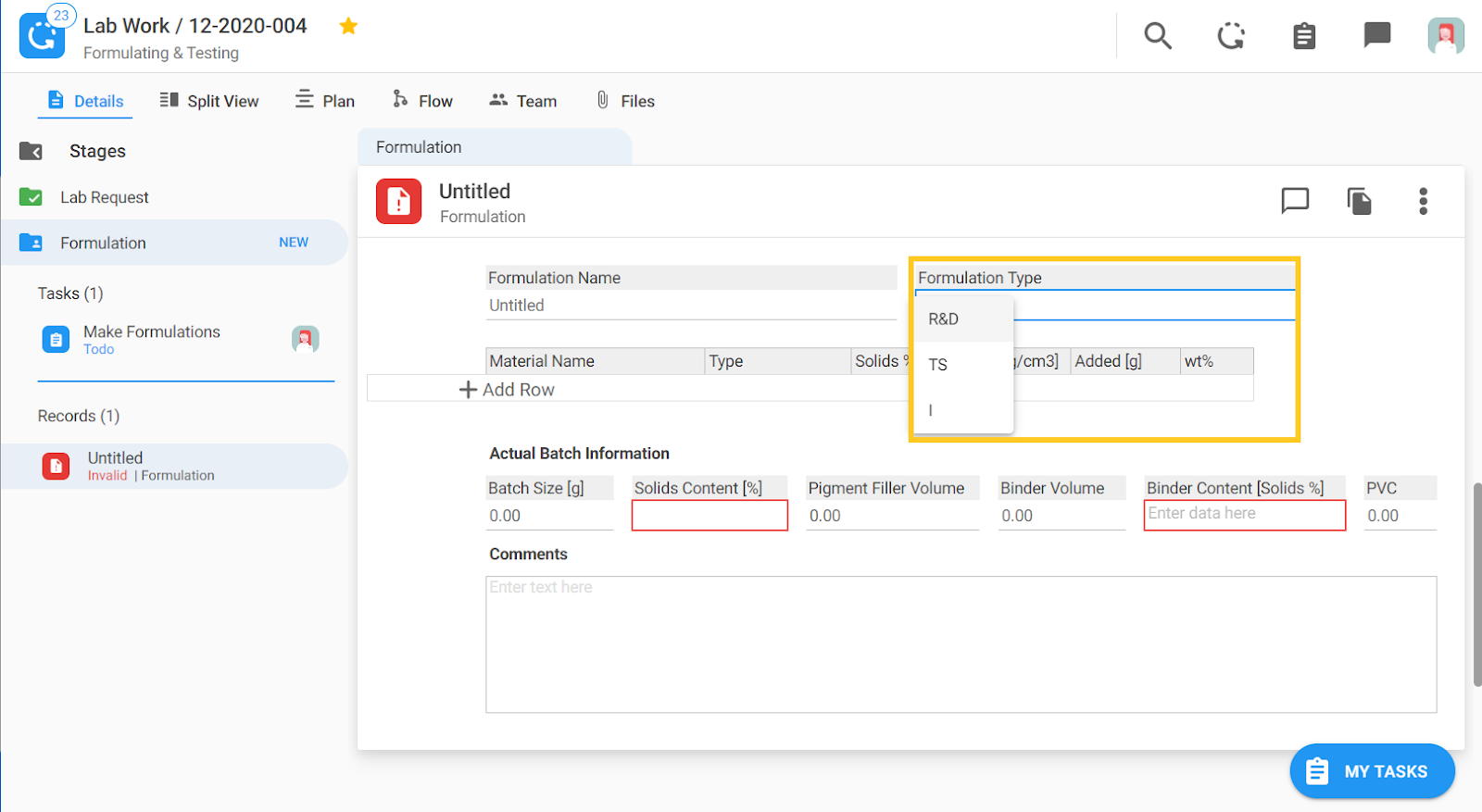
In this use case, you can include the appropriate letters in the Formulation Name based on category and also sequentially number each category of formulations as they are made.
For Example Formulation R&D 001 then Formulation R&D 002, but the next formulation would not be Formulation TS 003. Since it is the first in the TS sequence, the counter will start from 1 because it is a different category of formulation. Therefore, the naming + numbering would be:
- Formulation R&D 001
- Formulation R&D 002
- Formulation TS 001
- Formulation TS 002
You can see an example in the screenshot below in the left navigation (Figure 13b):

The key pattern capability needs to be configured in the Configuration portal. Please contact your CS manager for further details and possible options for your organization.
